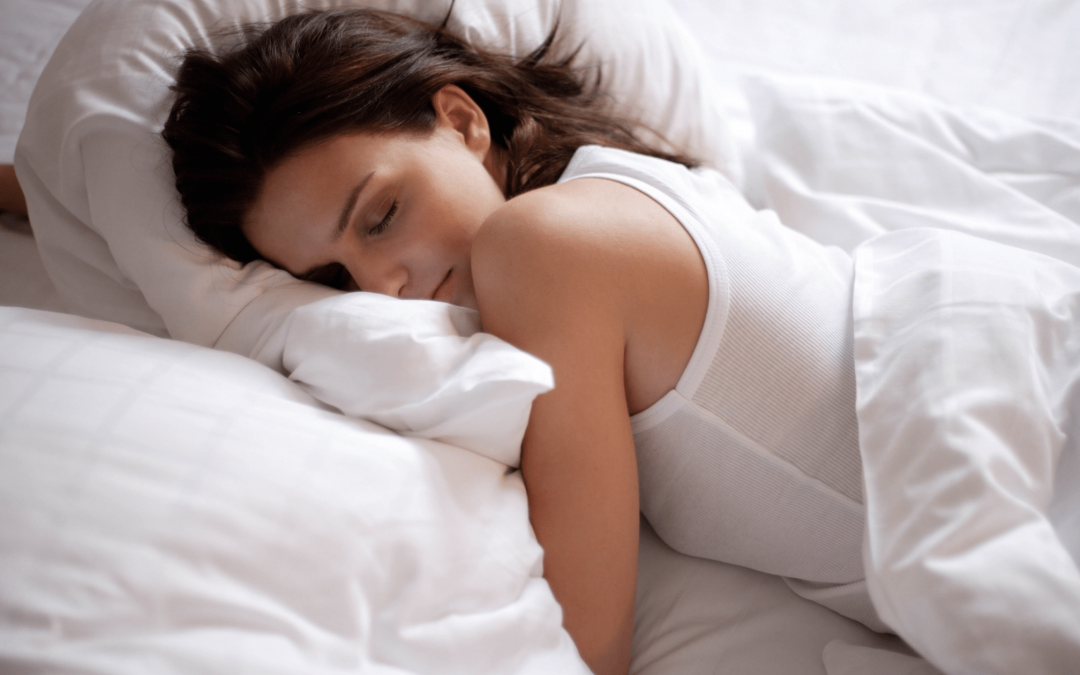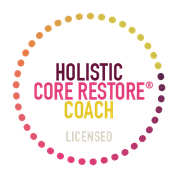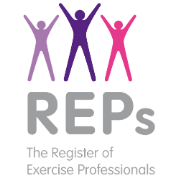
by Alexandra Church | Feb 20, 2021 | Health
The Importance of Sleep
- Your brain makes up just 2% of your weight but uses 20% of the energy your body produces.
- When you are sleep deprived your body struggles to extract glucose from the bloodstream so your brain cannot think straight.
- Sleep is the ultimate detox!
- Our brain cells continuously produce a kind of toxic waste that if allowed to build up, can disrupt your thoughts, behaviour and mood.
- Our brain produces CSF (cerebrospinal fluid) which flushes through your brain tissue, cleaning away unwanted waste and carries it to your liver for detoxification.
- When we sleep, our brain cells shrink and the space between the cells increases by up to 60%. This allows the CSF to flow quickly through the brain and wash away toxins.
- If you fail to get enough sleep, these toxins remain in your brain causing you to feel foggy and irritable.
Sleep and Weight Gain
- Two hormones play key roles in regulating the amount of food you consume. 1. Grehlin – produced in the gastrointestinal tract and stimulates appetite. 2. Leptin – created in fat cells and signals to the brain when you have had enough.
- Short-term sleep deprivation has a major impact on these hormones. Sleep-deprived volunteers showed a 29% increase in grehlin and an 18% decrease in leptin. Their appetites were stimulated and they didn’t feel as satisfied with their normal amount of food. They reported a 24% increase in appetite and were attracted to calorie-dense foods.
Beauty Sleep
- Human skin owes its smoothness and youthful appearance to a protein called collagen.
- As you age, collagen production decreases.
- Poor sleep encourages your body to produce the stress hormone ‘cortisol’
- Cortisol prevents the production of collagen.
The Right Amount of Sleep
- For most adults, between 7 – 8 hours is optimal.
- Less than 7 hours is considered sleep-deprived, but more than 9 hours is associated with a range of medical conditions including diabetes, obesity, headaches, cancer and heart disease. Many people also feel sleepy and groggy during the day.
Sleep and Paralysis
- When you sleep, your brain blocks almost all bodily movement to prevent us from acting out our dreams.
- Sometimes you will wake from a dream with your brain becoming conscious but still experiencing paralysis. Wiggling a finger, toe or blinking can all help the brain lift the paralysis.
- Sleep is essential for storing away information you have learnt or encountered during the day. Sleep is also vital for learning.
The Power of Napping
- Even the shortest of naps causes significant improvements in people’s moods, reaction time and alertness.
- They can boost memory and learning.
- A Harvard study looked at the lives of more than 20,000 adults aged between 20 and 80. Those who took a 30-minute nap at least 3 times per week had a 37% lower risk of heart-related death. This may be due to a lowering of blood pressure.
- Napping even just for a few minutes will help you develop a better memory, be more alert and increase your reaction time.
Although it feels as though your brain switches off at night, research shows that your unconscious mind is busy sifting through your thoughts, deleting those you no longer need and replacing them with new information.
Dreaming and Depression
- Deep sleep is almost the exact opposite of REM. During REM you are surprisingly close to wakefulness, and your brain is highly active, whereas in deep sleep you are cocooned away from reality and your brain is far more dormant.
- The two states both benefit you differently, with REM helping you to cope with your worries and concerns, and deep sleep restoring energy levels to your brain and body.
- Spend lots of time in deep sleep and you will find you have lots of energy. But will likely struggle with whatever is on your mind. Alternatively, spend most of the night dreaming and you will be better able to deal with what is on your mind but will be less energetic.
- People with severe depression often struggle to get a full nights sleep as they spend more time in REM trying to sort out their problems, so wake up exhausted.

by Alexandra Church | Jan 20, 2021 | Health, Pregnancy
The Benefits of Training During Pregnancy
As long as you are fit and healthy, and have no existing contraindications, then it is perfectly safe to continue training throughout your pregnancy. There are important physiological changes that occur during pregnancy and these must be taken into consideration when embarking on any exercise programme.
Some of the benefits of exercising during your pregnancy include:
- Increased energy levels and sense of wellbeing due to the release of endorphins
- Controlled weight gain
- Maintenance of muscle strength through functional training, which will help you to cope with the demands of labour and prepare you for motherhood
- Improved posture and less back pain
- Essential core work can help reduce postural changes which occur during pregnancy
- Strengthening your pelvic floor will mean you are less likely to suffer from urinary incontinence during the postnatal period
- Can help reduce constipation and varicose veins
- Quicker postnatal recovery

by Alexandra Church | Jan 20, 2021 | Health
Training Considerations During the Menstrual Cycle
Have you ever wondered why at certain times of the month you feel more lethargic and weaker than at others? It could well be down to where you are in your menstrual cycle and the physical changes that occur during the month.
The menstrual cycle typically lasts 28 days and is split into two main phases; the follicular phase, and the luteal phase. The follicular phase comes first and lasts from day 1 to day 14 (approximately) and occurs when the ovary releases an egg. During this time, you are more oestrogen dominant and your progesterone levels stay the same (as does your body temperature). During this follicular phase, you are physically primed to more intense workouts and can tolerate more anaerobic training due to increased insulin sensitivity. You are also more tolerant of pain.
Your BMR (Basal Metabolic Rate – a measure of the amount of energy/fuel that your body would burn at rest in 24 hours just to keep everything ticking over without doing any formal movement or exercise) decreases at the beginning of menstruation and reaches its lowest point a week before ovulation. This could be one of the reasons why you are more inclined to do intensive training as the body tries to counteract this slower metabolism.
Ovulation occurs around day 14 and oestrogen levels peak and starts to decline. Progesterone levels rise and your metabolism starts to increase. Insulin sensitivity also starts to decline.
During ovulation, oestrogen and strength levels peak, so you may be able to lift heavier weights. However, due to joint laxity, injuries can occur, so make sure you focus on proper form. It is interesting to note that on day 13 women often have their highest levels of testosterone, and this is when PBs can be achieved in terms of strength (it is also when they are most likely to get pregnant and will have a high libido!).
The Luteal Phase occurs just after ovulation on approximately day 14 until the end of the menstrual cycle. It lowers your insulin sensitivity, but your metabolism starts to rise again. As progesterone rises, serotonin levels can decrease slightly making you more likely to crave carbohydrates (carbohydrates can boost serotonin levels). Your body will now prefer using fat as a primary fuel source instead of glycogen, and you may need to use slightly lighter weights than during the follicular phase. Your core body temperature rises during the luteal phase due to the thermogenic effect of progesterone and your ventilation (rate and depth of breathing) and heart rate also increase. The latter by as much as 10 beats per minute. It is therefore important to keep hydrated and cool when training during this phase, and be gentle with yourself!
Being aware of where you are in your menstrual cycle can really help with your training programme and understand why you can feel fabulous and strong one week and lethargic and craving carbs the next!

by Alexandra Church | Dec 15, 2020 | Health, Post Natal, Pregnancy
Pelvic Floor
The pelvic floor consists of sling muscles comprising of the levator ani, the coccygeus muscle, and associated connective tissue which span the area underneath the pelvis. The function of the pelvic floor is to support the pelvic organs (bladder, bowel and uterus) and to control the release of urine, faeces and wind. There are two different types of muscle fibres; fast-twitch which kick in when we cough or sneeze, and slow-twitch which provide strength and endurance. For a healthy, functional pelvic floor, both these types of muscle fibres must work well.
The pelvic floor is placed under a lot of strain during pregnancy, and if you have experienced difficult labour and birth (especially if you needed forceps, an episiotomy or had any tearing) then there is likely to be a degree of damage to the muscles.
Reconnecting with your pelvic floor and core is the first step to recovery in the post-natal period, and a good exercise to start immediately is exhaling through pursed lips for a count of 8 seconds. You will find that your TVA (transverse abdominis – the deep layer of muscle located beneath the rectus abdominis) is activated, your stomach will move towards your spine, your pelvic floor will tense and lift, and your lower back muscles will also tense.
Correct and regular pelvic floor exercises will help to strengthen these muscles, but in some cases, you may need to be referred to a women’s health physio, for more specialised treatment. Once you are ready to return to exercise, it is important to keep impact to a minimum and to focus on exercises that allow you to engage your pelvic floor. Once you have built a strong foundation, then you can start to increase the intensity of your exercise.

by Alexandra Church | Nov 12, 2020 | Health, Well-being
The Cold Blast!
If you are lucky enough to live by a lake or the sea, a morning dip is a fantastic start to the day. Leap in first thing and enjoy the rush of endorphins and the natural high you will most certainly feel afterwards! If, however, you don’t have either the access (or the inclination!), try finishing your morning shower with a cold blast. By this I mean turning the temperature control to the coldest it will go, taking a deep breath to steel yourself, and getting under that shower head for as long as you can bear it. I have one every day and can vouch for the amazing feeling you experience after (not at the time!!).
There are numerous health benefits associated with this including:
– Boosting your immunity: as your body tries to warms itself, there is an increase in metabolic speed rate, and the number of disease-fighting immune system cells released
– Can reduce stress: the cold lowers levels of uric acid and boosts glutathione in your blood, making you feel less stressed.
– Improves alertness: as you are plunged into (or under if you are showering) the freezing water, you naturally take deeper breaths which increases your oxygen intake
– Pain relief and a natural high: when plunged into cold water, your body releases endorphins in reaction to the burning sensation on your skin. This can also act as an anti-inflammatory and can reduce pain. The cold also stimulates the ‘blue spot’ which is the brain’s primary source of noradrenaline (a chemical which plays a role in alleviating depression)
– Improves circulation: blood is diverted to your organs to keep them warm and stimulates the circulatory system. This is especially effective if you alternate between hot and cold temperatures, known as contrast water therapy
– Can help promote fat loss: cold temperatures can increase the production of brown fat (the good fat!) which burns energy and produces heat
– Boosting the libido: cold water is also said to increase testosterone and oestrogen levels
– Can improve the condition of your skin and hair: Hot water can dry out the hair and skin, but cold water prevents it losing too many of its natural oils and gives hair a lovely shine. The cold water also makes your skin look healthier by shrinking the pores. This is especially effective if combined with a body brush before you shower, which aids lymphatic drainage
– Finally, it is a great test of will power and you will feel extra virtuous on top of all the other benefits mentioned!
It is important to mention that if you suffer from the following conditions, you should avoid cold showers due to the potential shock to your system:
• Heart disease
• High blood pressure
• If you are ill or have a fever If in any doubt, always consult your GP or Health Care Professional.
The Benefits of Being in nature I spent my childhood living in Sweden and developed a passion for nature and all the wonderful health benefits that spending time outside can give you. Researchers at Stanford University found that people who walked for 90 minutes in nature showed decreased activity in the region of the brain associated with a key factor in depression, and experienced less anxiety and rumination, as well as more positive emotions such as happiness. Other research has shown nature to heal and soothe our minds, reduce blood pressure and improve cognitive function. Forest bathing – Shinrin-yoku ‘taking in the forest atmosphere’. Developed in Japan in the 1980s, it has become a cornerstone of preventative health and stress management in Japanese medicine. Forest bathing involves quiet walking in a forest taking in the sounds, smells, colours and shapes, and the health benefits include measured changes in immune markers and stress hormones. Research has shown that as little as 15 minutes spent in a forest can lower cortisol levels, boost the immune system and reduce anxiety. Researchers believe the immune system is boosted when you breathe in organic compounds called phytoncides released by trees.
With our busy, modern lives, many of us are becoming more and more disconnected from nature, and it is crucial that we get outside as much as possible. It can be tough in those winter months, or when the weather is grim, but training outside (who says you need a gym when there are trees to lash TRXs to or benches to do press-ups and step-ups on!) has shown to increase levels of serotonin and can reduce the boredom and fatigue that you can experience when training in a gym.

by Alexandra Church | Nov 1, 2020 | Health, Pregnancy
Overview of the Three Trimesters
First Trimester (weeks 1 – 12)
This is a very exciting time, but you will likely be suffering from some of the following complaints: nausea, breast tenderness, tiredness and feeling emotional.
Due to the production of the hormone relaxin, you may experience joint instability, and progesterone may make you constipated, so it is important to keep well hydrated and increase your fibre intake.
Exercise considerations
You don’t need to make any dramatic changes or modifications to your exercise programme if you are currently training, but the first 3 months are crucial for foetal development. Be aware of overheating, and excessive production of lactic acid, which can have severe adverse effects on this development. It is important to reduce exercise intensity and focus on the correct technique.
Your heart rate will be elevated when exercising in early pregnancy, as a result of a deficiency in blood volume and corresponding low blood pressure. Most aspects of respiratory function are actually improved during pregnancy.
Insulin
1 in 300 women will develop diabetes mellitus (also known as gestational diabetes) at some point in their pregnancy. Insulin resistance increases during pregnancy, making the woman’s pattern of energy similar to that of a mild diabetic. During mid to late pregnancy, more fat is utilised to supply maternal energy leaving more carbohydrate available for the foetus and placenta.
Second Trimester (weeks 13 – 28)
As the placenta begins to take over the role of maintaining the pregnancy, you may start to feel better and have more energy.
As your baby continues to grow, you will notice a change in your centre of gravity, which will affect your posture and balance.
Exercise Considerations
If you have stopped training in the first trimester, then your return to exercise must be gentle and cautious. High impact activities and combat sports should be avoided, and again a focus on proper technique is crucial.
Continued hormonal influence affects joint instability and cardiorespiratory systems.
Third Trimester (weeks 29 – 40)
You will be aware of the increased size and weight of your growing baby and will experience further changes in the centre of gravity and balance. The pressure of your uterus will increase on your bladder, and you may well feel tired and have general aches and pains. Feelings of breathlessness are a result of the diaphragm being pushed up.
Exercise considerations
It is important to listen to your body and optimise rest and regeneration.
Lower the intensity, and prioritise pelvic mobility and birth preparation exercises. Try to move daily, preferably outdoors, and prepare your body’s tissues and systems with appropriate nutrition and hydration. It is during the last month of pregnancy that babies start to receive their microbiome from the mother, so ensuring you have a healthy gut and vaginal flora is extremely important in setting up the baby’s colonisation and immune system.








